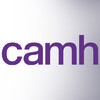Canadian rTMS Treatment and Biomarker Network in Depression Trial (CARTBIND)
Depression

About this trial
This is an interventional treatment trial for Depression focused on measuring depression, treatment resistance, biomarkers, repetitive transcranial magnetic stimulation
Eligibility Criteria
Inclusion Criteria:
- are outpatients
- are voluntary and competent to consent to treatment
- have a Mini-International Neuropsychiatric Interview (MINI) confirmed diagnosis of MDD, single or recurrent
- are between the ages of 18 and 59
- have failed to achieve a clinical response to an adequate dose of an antidepressant based on an Antidepressant Treatment History Form (ATHF) score for that antidepressant trial of > 3 in the current episode 105,106 OR have been unable to tolerate at least 2 separate trials of antidepressants of inadequate dose and duration (ATHF score of 1 or 2 on those 2 separate antidepressants)
- have a score > 18 on the HRSD-17 item
- have had no increase or initiation of any psychotropic medication in the 4 weeks prior to screening
- able to adhere to the treatment schedule
- Pass the TMS adult safety screening (TASS) questionnaire
- have normal thyroid functioning based on pre-study blood work.
Exclusion Criteria:
- have a Mini-International Neuropsychiatric Interview (MINI) confirmed diagnosis of substance dependence or abuse within the last 3 months
- have a concomitant major unstable medical illness, cardiac pacemaker or implanted medication pump
- have active suicidal intent
- are pregnant
- have a lifetime Mini-International Neuropsychiatric Interview (MINI) diagnosis of bipolar I or II disorder, schizophrenia, schizoaffective disorder, schizophreniform disorder, delusional disorder, or current psychotic symptoms
- have a MINI diagnosis of obsessive compulsive disorder, post-traumatic stress disorder (current or within the last year), anxiety disorder (generalized anxiety disorder, social anxiety disorder, panic disorder), or dysthymia, assessed by a study investigator to be primary and causing greater impairment than MDD
- have a diagnosis of any personality disorder, and assessed by a study investigator to be primary and causing greater impairment than MDD
- have failed a course of ECT in the current episode or previous episode
- have received rTMS for any previous indication due to the potential compromise of subject blinding
- have any significant neurological disorder or insult including, but not limited to: any condition likely to be associated with increased intracranial pressure, space occupying brain lesion, any history of seizure except those therapeutically induced by ECT or a febrile seizure of infancy, cerebral aneurysm, Parkinson's disease, Huntington's chorea, multiple sclerosis, significant head trauma with loss of consciousness for greater than 5 minutes
- have an intracranial implant (e.g., aneurysm clips, shunts, stimulators, cochlear implants, or electrodes) or any other metal object within or near the head, excluding the mouth, that cannot be safely removed
- if participating in psychotherapy, must have been in stable treatment for at least 3 months prior to entry into the study, with no anticipation of change in the frequency of therapeutic sessions, or the therapeutic focus over the duration of the study
- clinically significant laboratory abnormality, in the opinion of the one of the principal investigators or study physicians
- currently take more than lorazepam 2 mg daily (or equivalent) or any dose of an anticonvulsant due to the potential to limit rTMS efficacy
- non-correctable clinically significant sensory impairment (i.e., cannot hear well enough to cooperate with interview).
Sites / Locations
- Non-Invasive Neurostimulation Therapies Centre, University of British Columbia
- Toronto Western Hospital
- Centre for Addiction and Mental Health
Arms of the Study
Arm 1
Arm 2
Experimental
Active Comparator
Single site rTMS
Dual site rTMS
Each treatment session will consist of: 1200 pulses of iTBS over a posterior target location followed by a 60 minute interval, then 1200 pulses of iTBS over an anterior target location.
Each treatment session will consist of: 600 pulses of iTBS over the posterior target, followed immediately by 600 pulses of iTBS over the anterior target location followed by a 60 minute interval, then 600 pulses of iTBS over the posterior target, followed immediately by 600 pulses of iTBS over the anterior target location.
Outcomes
Primary Outcome Measures
Secondary Outcome Measures
Full Information
1. Study Identification
2. Study Status
3. Sponsor/Collaborators
4. Oversight
5. Study Description
6. Conditions and Keywords
7. Study Design
8. Arms, Groups, and Interventions
10. Eligibility
12. IPD Sharing Statement
Learn more about this trial
